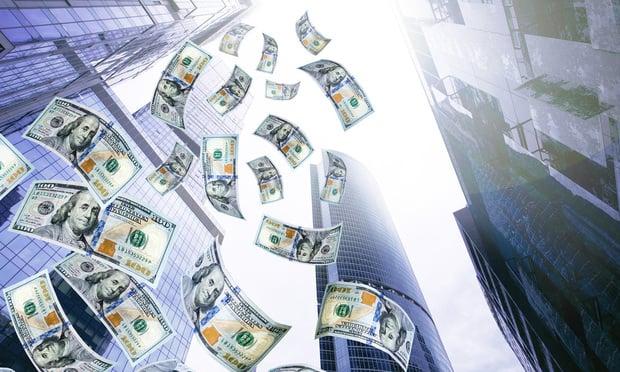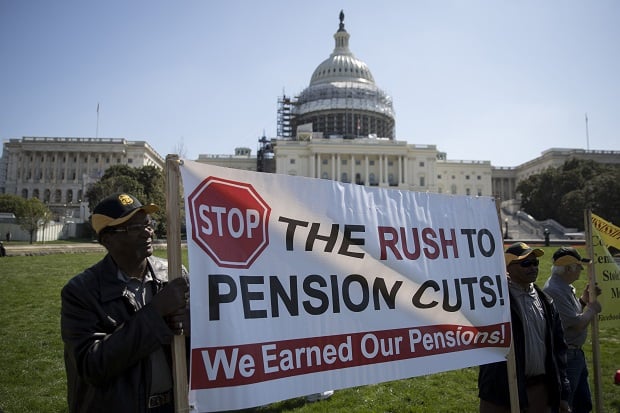
Sponsors of corporate defined-benefit pension plans have untilmid-September to write off voluntary contributions to plans at theformer corporate tax rate, according to analysis from Goldman SachsAsset Management (GSAM).
|Last year's Tax Cuts and Jobs Act, which slashed the corporatetax rate from 35 percent to 21 percent, has helped motivate one ofthe most active periods for defined benefit sponsors in recentmemory, writes Mike Moran, a managing director and pensionsstrategist for GSAM.
|“The first half of 2018 was one of the most active periods forcorporate defined-benefit plans in recent years,” writes Moran.“The impact of corporate tax reform, combined with rising PensionBenefit Guaranty Corporation [PBGC] premiums, helped to spurnotable voluntary contribution activity from sponsors.”
|Along with the opportunity to write off pension contributions atthe prior 35 percent corporate tax rate, rising PBGC variablepremiums on plan deficits have encouraged more sponsors to makecontributions far above the statutory minimum. Moran says thevariable rate is now generally assessed at 3.8 percent, and isscheduled to rise to 4 percent by 2020.
|A raft of voluntary contributions have been disclosed sincepassage of the Tax Cuts and Jobs Act last December. FedEx, PepsiCo,Verizon, and John Deere are among the plan sponsors that havepledged $1 billion or more in voluntary contributions. More maycome as the current earnings season commences.
|“We would expect that additional sponsors may consider makingdiscretionary contributions as the window of opportunity topotentially capture the higher tax deduction quickly begins toclose,” writes Moran.
|The S&P 500 companies that GSAM works with are projected tomake $60 billion in contributions in 2018, most of which are abovethe mandatory contributions set by PBGC. Last year the same cohortwas equally aggressive, even before passage of the new tax law,making about $63 billion in contributions. That was the highestlevel of contributions since 2003. Moran states that many of thesponsors had little or no required contributions to make.
|That funding, along with sound returns in equity markets andrising interest rates—the latter lowers the cost of projectedliabilities—has continued to move the aggregate funding level forcorporate pensions higher.
|GSAM estimates the funded status of the entire U.S. corporatepension system to be 89 percent, up from 81 percent at the end of2016.
|Improved pension funding may encourage more sponsors to transfer risk through annuity buyouts. FedExannounced a $6 billion transaction in May, and Raytheon announced anearly $1 billion transfer this week.
|“In the past, some sponsors may have wanted to annuitize aportion of their plan but perhaps did not want to make acontribution in order to complete the transaction. Now, moresponsors are willingly making sizable contributions, which couldmake an annuitization transaction easier to complete,” writesMoran, who cited LIMRA data showing 2017 was the most active yearfor risk transfer annuity deals since 2012.
|From: BenefitsPro
Complete your profile to continue reading and get FREE access to Treasury & Risk, part of your ALM digital membership.
Your access to unlimited Treasury & Risk content isn’t changing.
Once you are an ALM digital member, you’ll receive:
- Critical Treasury & Risk information including in-depth analysis of treasury and finance best practices, case studies with corporate innovators, informative newsletters, educational webcasts and videos, and resources from industry leaders.
- Exclusive discounts on ALM and Treasury & Risk events.
- Access to other award-winning ALM websites including PropertyCasualty360.com and Law.com.
*May exclude premium content
Already have an account? Sign In
© 2024 ALM Global, LLC, All Rights Reserved. Request academic re-use from www.copyright.com. All other uses, submit a request to [email protected]. For more information visit Asset & Logo Licensing.







